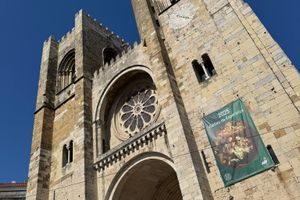
Before he was widely known across Christendom as Saint Anthony of Padua, Fernando Martins was a young boy studying at the Lisbon Cathedral school. Legend has it that the local lad was tempted by the devil in the cathedral, but resisted and repelled his lures by making the sign of the cross.
Visitors to the church can now see Martins’ sign on the wall, covered by a decorative grille, on the way up the stairs to the treasury. The presence of the mark and its celebration speaks to the importance of Martins to the city, for he would go on to be venerated as one of Roman Catholicism's most significant medieval saints.
Born in Lisbon in the 1190s to a rich family, the boy was baptized, studied, and sang in the choir at the cathedral. In his mid-teens, Martins left his hometown and made his way to the Monastery of the Holy Cross in Coimbra, where he completed his studies and was ordained as a priest.
A few years later, he found himself attracted to the Franciscan lifestyle and joined the recently-formed Order of Friars Minor, taking on the new name of Anthony in the process. He subsequently travelled to Morocco, Italy, and France, eventually settling in Padua. His association with the cities of his birth and death are highlighted in the names that he is most commonly known by today — either Saint Anthony of Lisbon or Saint Anthony of Padua.
A life of preaching, charitable acts and performing miracles ensured that Anthony was canonized as a saint within a year of his death in 1231. Now regarded as one of the most prominent Franciscans, Saint Anthony is also lauded as the patron saint of Lisbon and Portugal (in addition to lost items, lost people, and people looking for a spouse, among other things).
The sign of the cross in Lisbon Cathedral shows both civic pride in one of its favorite sons and provides Saint Anthony with something of a spiritual origin story.
0 comments:
Post a Comment